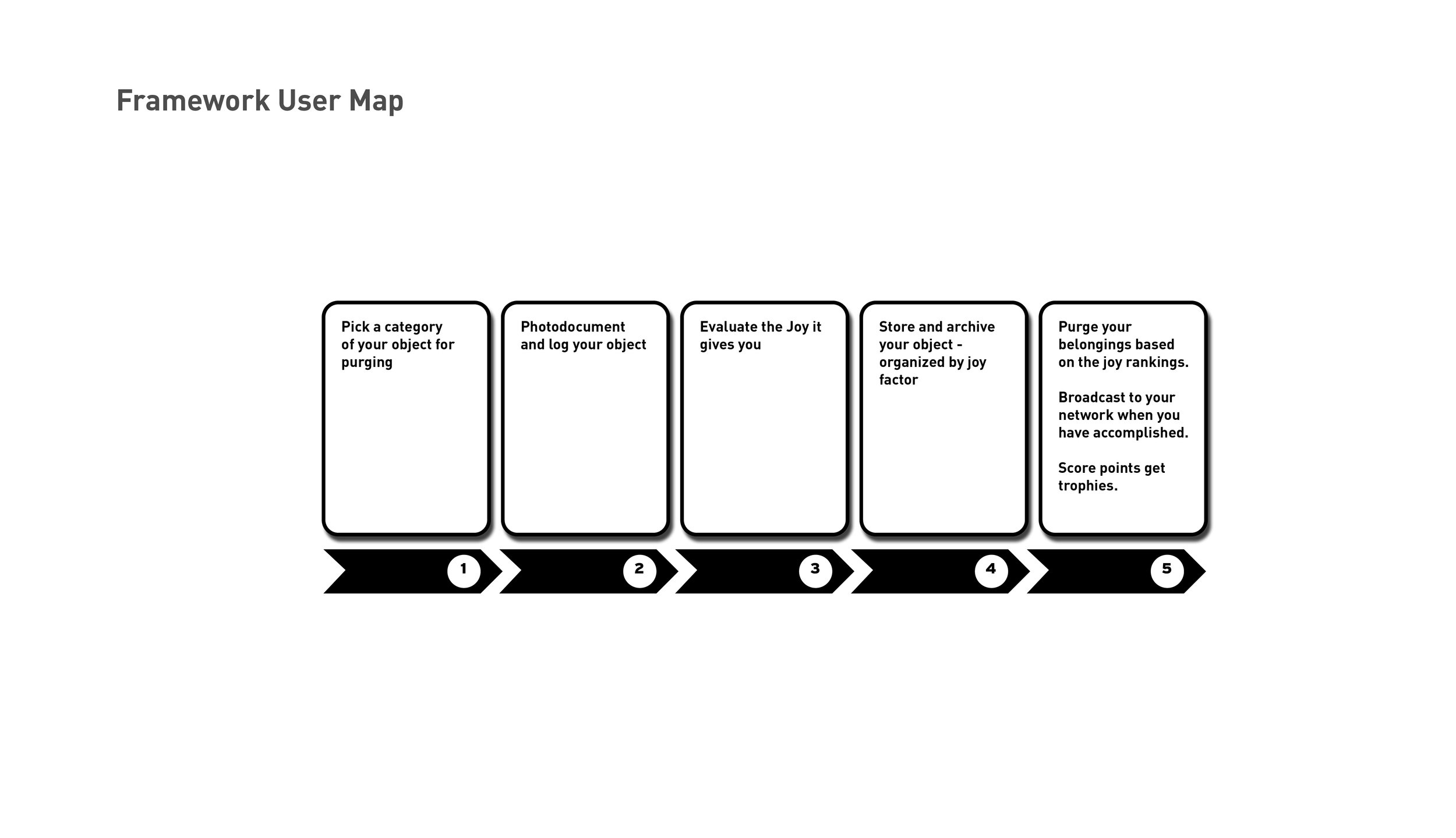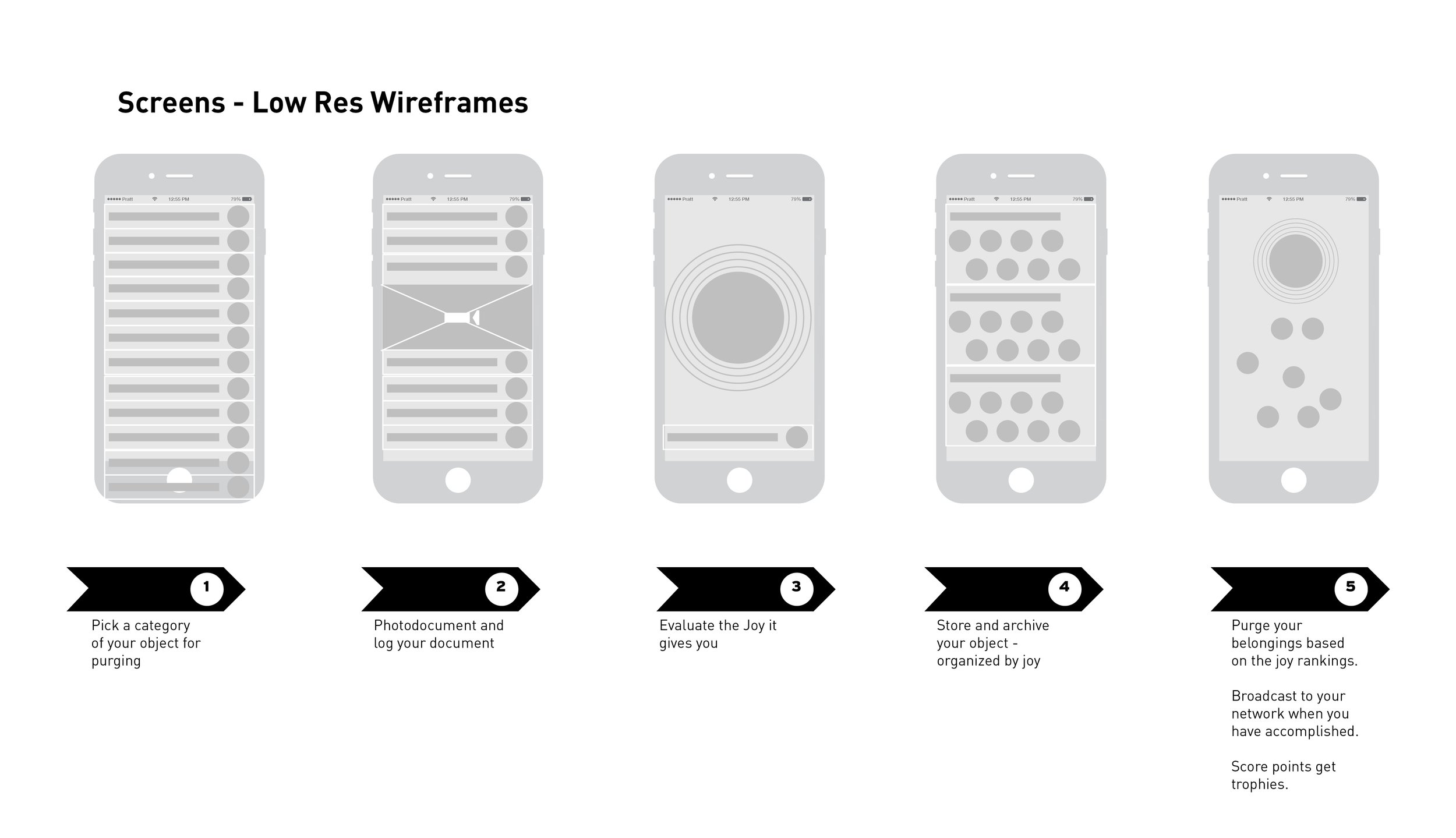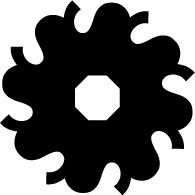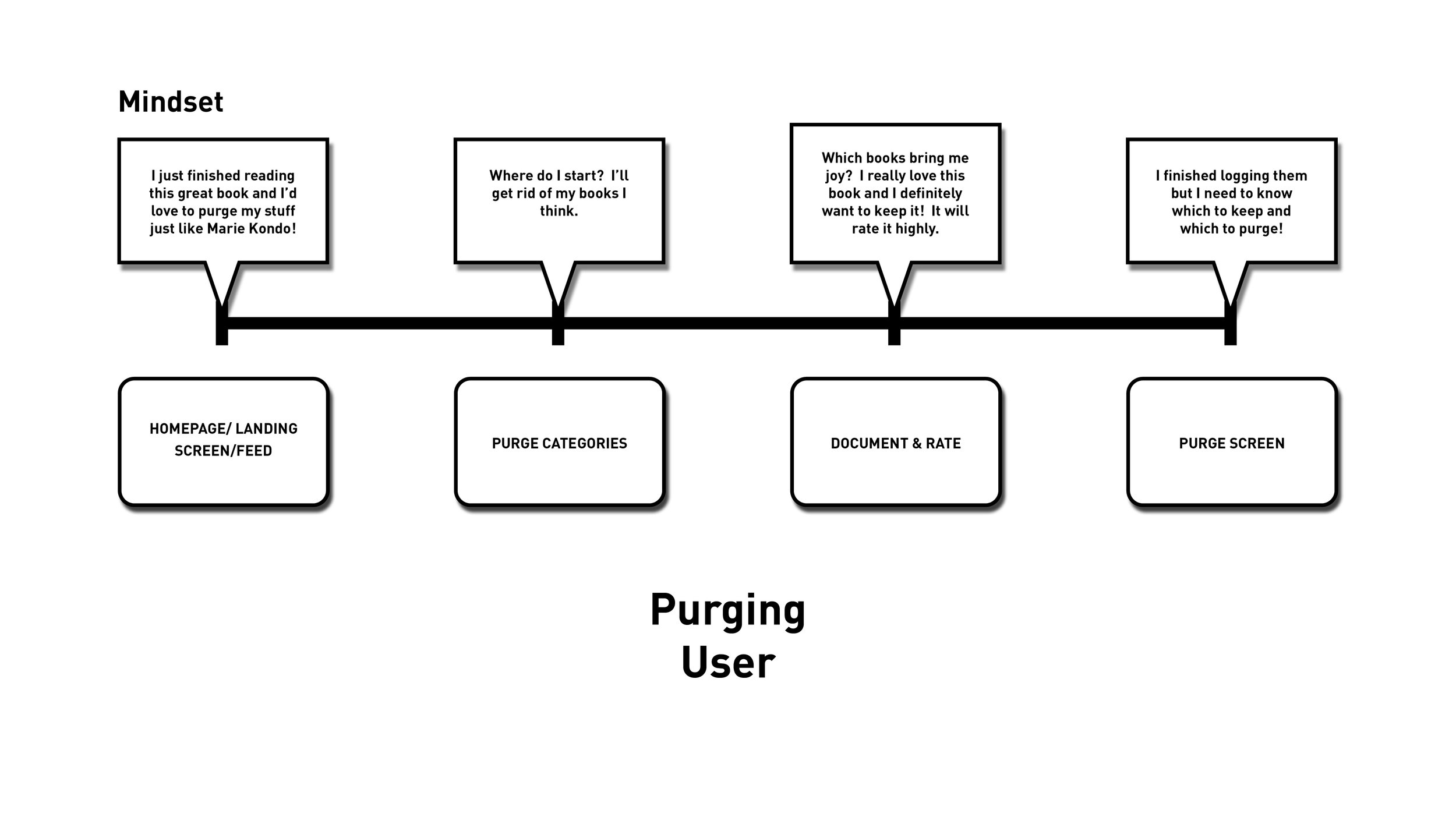The Life-Changing Magic of Tidying Up App
This project was created independently as a culmination of the Pratt UX UI Certificate program. The program entailed researching, prototyping, and coding html/CSS.
GOALS
The goal in creating the app for the The Life-Changing Magic of Tidying Up was create an app that could enhance the experience of the book while creating a different experience from the ideas presented in the book, all the while capturing the lighthearted, joyful, and magical spirit of Kondo. Based on the user research that indicated that motivation could be found in peer networks and accountability the solution would need to be both fun and encouraging game and social network.
OVERVIEW
Research indicates that the largest hindrance to tidying is motivation. The app seeks to cultivate motivation by building a peer network to build a community, have fun, and engender accountability. The experience needs to be both a fun and social to be successful.
Determining the design principles of the project will serve to guide the design process and create a standard to which decisions will be made:
Simple
Fun
Joyful & Magical
Challenges:
Is there a way to make an app for the life-changing magic of tidying up that is engaging, useful, and fun to use?
Is there a way to capture the “magic” and “joy”of tidying?
Is there way to create a product that complements and enhances the experience of the book.
Research /Inspiration
Research revealed that motivation to build habits around tidying was the main pain point. The intention of the app is to cultivate motivation in peer networks and accountability.
The research for the project involved four research methods:
In Situ - This required visiting the homes of users to understand their belongings in context.
Surveys - This entailed open-ended un-biased questions regarding users habits.
Contextual Interviews
Competitive Research - A survey of competitive products evaluating good and bad elements of each.
SUMMARY OF RESEARCH
Finding: People are Busy
Their free time is extremely limited it comes to tidying & organizing with what free time they have.
Motivation is an issue.
Some people just don’t care to clean.
Finding: Motivations & How to Inspire
When people to tidy and organize they find it the very satisfying - they relish in the results of the labor and find joy in that moment Self improvement is a major motivator. Games and apps that involve rewards, collecting, and earning feedback are addictive/fun and could provide a framework around which to design.
Finding: Accountability Counts
People found motivation to tidy & organize when they anticipate guests or when someone else has to suffer as a result of their mess. Incorporating a social network could help encourage tidiness by recognizing this sentiment.



Process/Ideation and Prototype
The app is built around the two experiences, purging and organizing, as outlined by the book. What enhances this experiences is the social interaction layer - the app incorporates a friend feed and point system. The user can challenge other users to organize and clean and compare.
The app seeks to create a fun and magical social experience that is simple and pleasant. The interactions are joyful, bouncy, and simple to create an addictive experience. By leveraging community the app seeks to build an accountability network. What was a burdensome task could become a supportive group activity.











